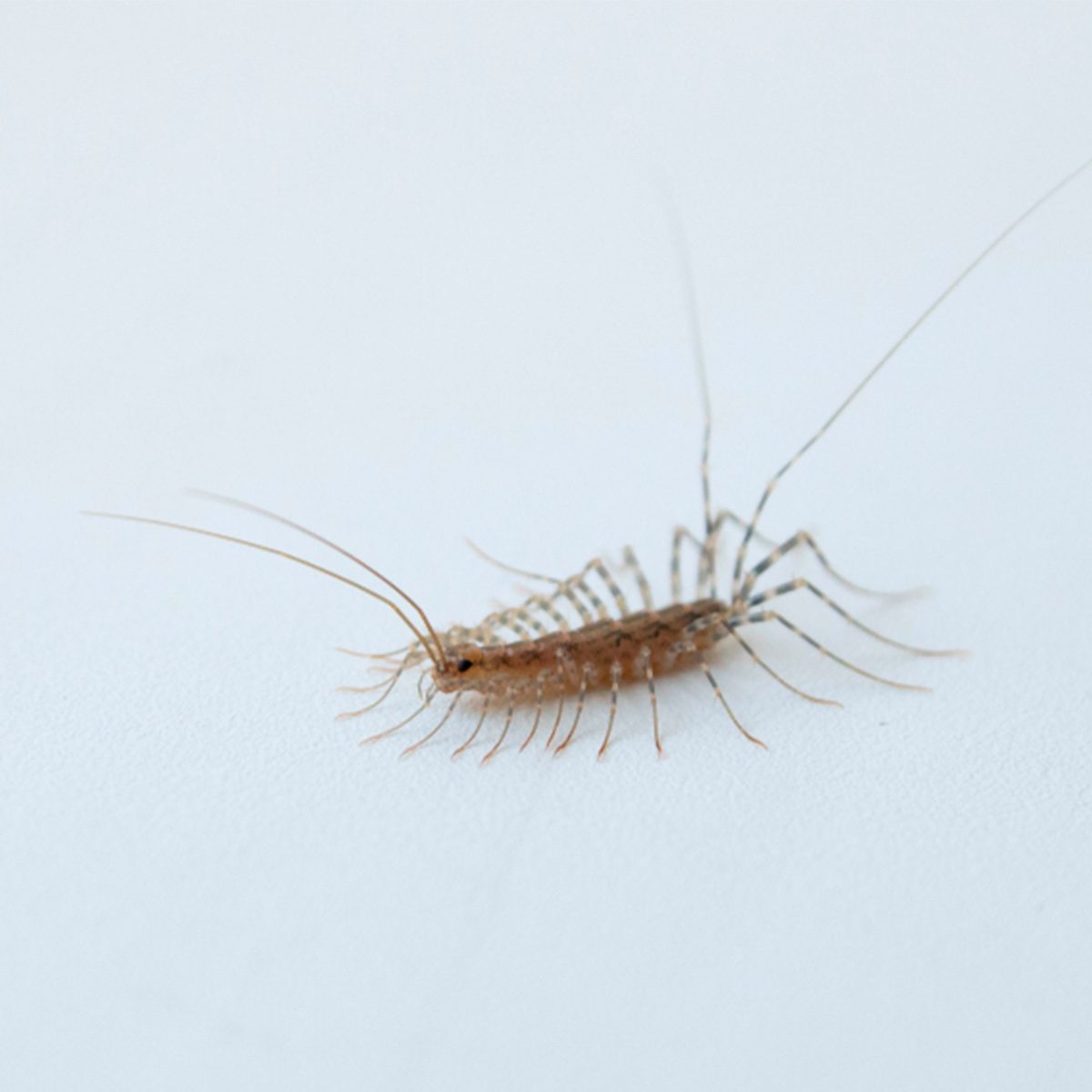Table Of Content

Adult house centipedes have 15 pair of legs with the last pair (on adult females) nearly twice the length of the body, which is one to one and one-half inches in length (Figure 1). This gives the centipede an overall appearance of being from three to four inches in length (including legs and antennae). The legs are banded light and dark, and the body is a dirty yellow with three longitudinal, dark stripes. Centipedes have a uniquely structured first pair of legs, which are used as claws to grasp, penetrate, and inject venom into their prey. Generally, centipede bites appear to have two puncture wounds and look similar to a spider bite.
How Big Are Bed Bugs? The Complete Size Guide
Mice, those elusive yet troublesome creatures, have a knack for infiltrating our living spaces and turning a minor annoyance into a full-blown infestation. Understanding their characteristics and behavior is pivotal in effectively controlling these invaders.... Many people have difficulties telling the difference between centipedes and millipedes since they are fairly similar looking (even their names sound the same).
Pantry Foods That Never Expire
If you have house centipedes, it typically means you have food for the centipedes in your home. They feed on many different insects, like bed bugs, roaches, silverfish, and wasps. However, they are so small that the bite is not likely to break through a person’s skin. House centipedes typically do not try to bite humans because they don’t see humans as a food source. Most bites occur because the person was handling the centipede. As long as you don’t touch it, the centipede is not likely to attack you or try to bite you.
Chemical Control
Maxillipeds enter a victim's tissue and inject venom produced by a gland at their base. Small centipedes' maxillipeds are too weak to penetrate human skin, and their bite typically yields only minor discomfort, similar to that caused by a bee sting. The House Centipede (Scutigera coleoptrata) is a yellowish grey centipede with 15 pairs of legs. Originally native to the Mediterranean region, the species has spread to other parts of the world, where it usually lives in human homes. The House Centipede is an insectivore that kills and eats insects.
Are House Centipedes Venomous?

Whether it’s used for hunting or self-defense, the insect will use the venom intentionally. Think of the house centipede using its venom-filled legs to subdue prey. Those who are particularly sensitive might experience worse symptoms. Allergy sufferers may have to seek medical attention if a severe reaction occurs. There is another element to the bite that can cause irritation in those with sensitivities—more on that in a second.
Centipedes: Here's why you should never kill a house centipede
Additionally, these locations are prone to other kinds of bugs, which allows the centipede to have a food source. In addition to being harmless, centipedes actually keep your home clean. This means that they will eat cockroaches, millipedes, termites, and ants around your home.
Solved! Should You Really Kill House Centipedes?
While creepy, centipedes pose little danger to people or a home. There are more than 8,000 centipede species in the world, appearing on every continent except Antarctica. Have you ever seen a many-legged creature scurrying so fast across the ground that you take a second look to make sure you actually saw it? Not only can they provide recommendations regarding treatment, but they can also provide information to help you reduce the likelihood of secondary infection from improper wound care. From appearance to where you might find them, here's everything you need to know about centipedes... Centipedes get into your house through cracks, crevices, and gaps around your doors, pipes, siding, windows, and wiring.
House centipedes won’t harm people or homes.
Centipedes are certainly creepy crawly creatures that can induce a scream or dramatic response. They are not bloodsucking monsters that will feed on you or your family members, and, they don’t feed on wood or fabric like termites and millipedes either. House centipedes are harmless to humans and can be beneficial due to their role in controlling other household pests. Understanding their behavior and taking appropriate precautions can help ensure coexistence with these creatures without any significant concerns for your health or well-being. If you do notice house centipedes inside your home, start by finding out what their food source is. They’re looking for other insects to eat, so if the house centipede is in your home it is a sign there are other insects.
Terrifying centipede attacks, kills mouse in under 30 seconds - New York Post
Terrifying centipede attacks, kills mouse in under 30 seconds.
Posted: Wed, 24 Jan 2018 08:00:00 GMT [source]
This method saves you the trouble of going on a centipede hunt and timing your “container trap” just right. Of course, if you start experiencing more severe side effects like heart palpitations, you need to seek medical help immediately. You may be experiencing an allergic reaction, which can be incredibly powerful. Because of this, you want to take care when cleaning up out or doing gardening.

Their presence often points to further pest problems, as they feed on ants, spiders, and crickets. While centipedes are not dangerous, their fast movements and alarming appearance make many people uneasy. Centipedes are nocturnal creatures that hide in dark, damp, and cool places during the daytime and venture out in the dark to hunt. House centipedes also thrive outdoors and live under logs, rocks, and fallen tree bark. House centipedes have three life stages — egg, larva, and adult.
Using insect screens on doors and windows can also help keep them outdoors. Venom is produced by a gland at the base of the fangs and is administered by maxillipeds on the first body segment. Upon capturing prey, the poison gland is squeezed by the muscles surrounding it and ejects toxins through needle-like ducts. Despite this, the venom usually is not strong enough to be life threatening to people, and most centipede bites are typically more painful for humans than they are dangerous.
House centipedes do not survive winters outdoors in Pennsylvania, but readily reproduce in heated structures. During the summer, they can sometimes be found outdoors in areas near buildings. Just like their outdoor environment, centipedes look for a damp location like a bathroom or basement. If centipedes are in the home, you can reasonably assume there are other critters around, as centipedes find and hunt other types of bugs. Centipedes can have a few dozen pairs of legs to a few hundred, which is how they got their name.
Like all centipedes, these creatures prefer dark and wet, so house centipedes tend to be found in bathrooms, kitchens, basements, or other damp nooks. These types of centipedes grow to about one to one and a half inches in length, and their bodies are black and either yellow or white. Despite their name, they have only 15 pairs of legs but are swift on those legs. This powdered substance made from crushed insect exoskeletons is a very effective remedy for all kinds of indoor pests. The microscopic jagged edges of the powder pierce the body of the house centipedes and also dry out the fat and oils contained inside, slowly killing them. Sprinkle liberally around cracks, door thresholds, and in corners, especially in damp areas.
You definitely don’t want a centipede infestation, but just one centipede can get rid of other bug issues you may have. Reactions to house centipede bites can vary, and not everyone will react the same way. Additionally, while these bites can be uncomfortable, they are typically not a cause for serious concern. Most people find that the symptoms of a house centipede bite subside within a few hours to a day, and they do not require medical treatment. House centipedes are hunters and are always looking for more food. They prefer warmer places that are wet and humid, as this keeps them closer to their food sources.
Not squeamish about killing the centipedes to get rid of them? A variety of sprays, dust, granules, and baits can poison the invaders and control the population. The downside is that sticky traps will kill any creatures unlucky enough to skitter over them and become stuck. Yes, they’re fast, but if you time it right, some container is all it takes to catch a centipede.
While a centipede running across the floor at night can be shocking to see, they are actually beneficial to have in your home if you have other pests. They’re working on killing the other pests in your home, even if you hadn’t realized they were there. Once you do this, the house centipedes will move out and will go somewhere else to find their food. House centipedes originated in the Mediterranean but have spread to be just about anywhere that is warm and humid. They tend to find their way into homes through small cracks that could let other insects in as well and will stay in a home as long as they have a food source. They enter homes to look for other types of insects that can typically be found in homes.

No comments:
Post a Comment